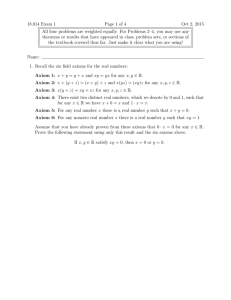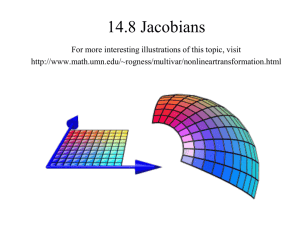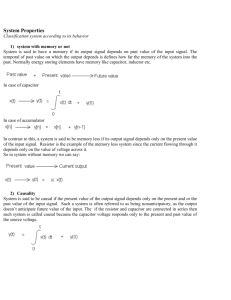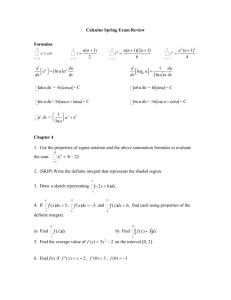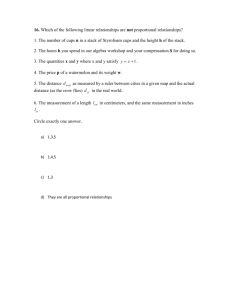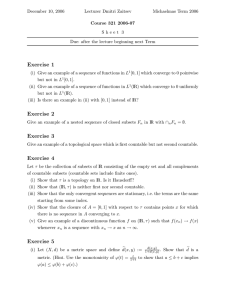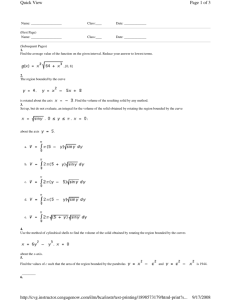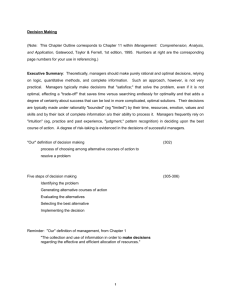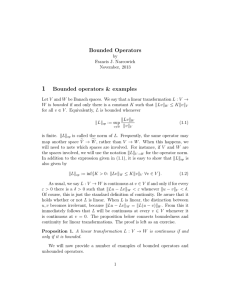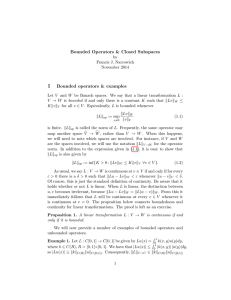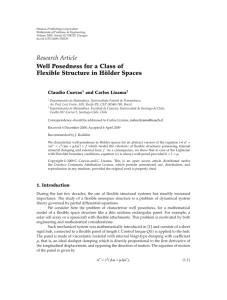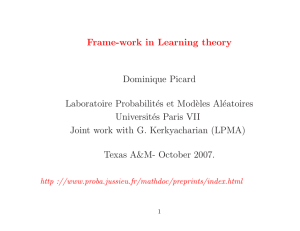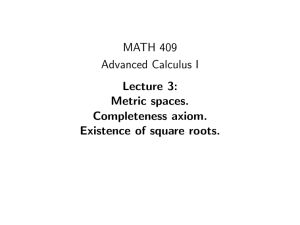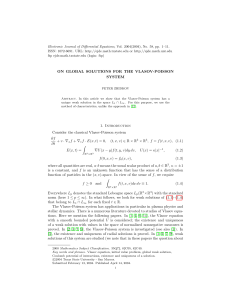Solutions to Exam 1 (Part I)
advertisement
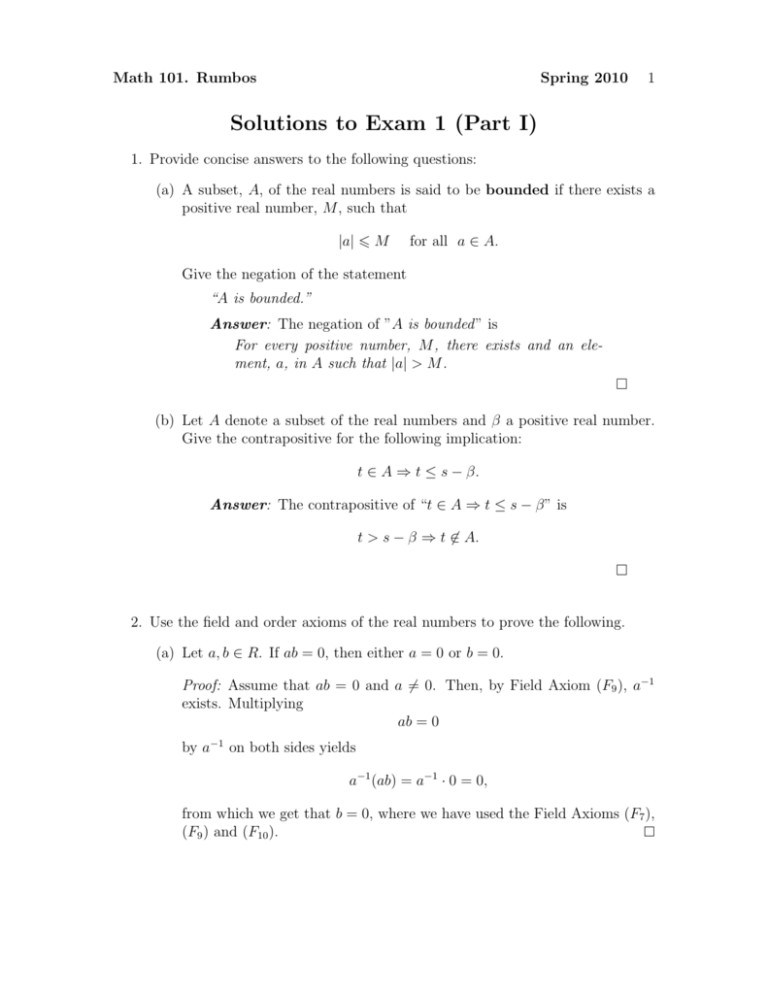
Math 101. Rumbos Spring 2010 1 Solutions to Exam 1 (Part I) 1. Provide concise answers to the following questions: (a) A subset, 𝐴, of the real numbers is said to be bounded if there exists a positive real number, 𝑀 , such that ∣𝑎∣ ⩽ 𝑀 for all 𝑎 ∈ 𝐴. Give the negation of the statement “𝐴 is bounded.” Answer: The negation of ”𝐴 is bounded ” is For every positive number, 𝑀 , there exists and an element, 𝑎, in 𝐴 such that ∣𝑎∣ > 𝑀 . □ (b) Let 𝐴 denote a subset of the real numbers and 𝛽 a positive real number. Give the contrapositive for the following implication: 𝑡 ∈ 𝐴 ⇒ 𝑡 ≤ 𝑠 − 𝛽. Answer: The contrapositive of “𝑡 ∈ 𝐴 ⇒ 𝑡 ≤ 𝑠 − 𝛽” is 𝑡 > 𝑠 − 𝛽 ⇒ 𝑡 ∕∈ 𝐴. □ 2. Use the field and order axioms of the real numbers to prove the following. (a) Let 𝑎, 𝑏 ∈ 𝑅. If 𝑎𝑏 = 0, then either 𝑎 = 0 or 𝑏 = 0. Proof: Assume that 𝑎𝑏 = 0 and 𝑎 ∕= 0. Then, by Field Axiom (𝐹9 ), 𝑎−1 exists. Multiplying 𝑎𝑏 = 0 by 𝑎−1 on both sides yields 𝑎−1 (𝑎𝑏) = 𝑎−1 ⋅ 0 = 0, from which we get that 𝑏 = 0, where we have used the Field Axioms (𝐹7 ), (𝐹9 ) and (𝐹10 ). Math 101. Rumbos Spring 2010 2 (b) Let 𝑝 ∈ ℝ. If 𝑝 > 1, then 𝑝 < 𝑝2 . Proof: Assume that 𝑝 > 1. It then follows that 𝑝 > 0, since 1 > 0. We also have that 𝑝 − 1 > 0. Consequently, by the Order Axiom (𝑂3 ), 𝑝(𝑝 − 1) > 0. Thus, by the distributive property, 𝑝2 − 𝑝 > 0, from which we get that 𝑝 < 𝑝2 . 3. Use the completeness axiom of ℝ to prove that the set of natural numbers is not bounded above. Deduce, therefore, that for any real number, 𝑥, there exists a natural number, 𝑛, such that 𝑥 < 𝑛. Proof: Assume by way of contradiction that ℕ is a bounded above. Then, since ℕ is not empty, it follows from the completeness axiom that sup(ℕ) exists. Thus there must be 𝑚 ∈ ℕ such that sup(ℕ) − 1 < 𝑚. (1) It follows from the inequality in (1) that sup(ℕ) < 𝑚 + 1, where 𝑚 + 1 ∈ ℕ. This is a contradiction. Therefore, it must be that case that ℕ not bounded above. Thus, given any real number, 𝑥, there must be a natural number, 𝑛, such that 𝑥 < 𝑛. Otherwise, 𝑚 ⩽ 𝑥 for all 𝑚 ∈ ℕ, which would say that 𝑥 is an upper bound for ℕ. But we just proved that ℕ is not bounded above.
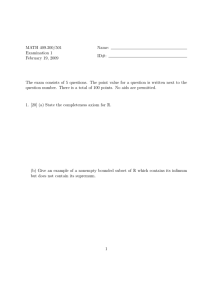
![MA3422 (Functional Analysis 2) Tutorial sheet 7 [March 13, 2015] Name: Solutions](http://s2.studylib.net/store/data/010731576_1-7cab095e21e09d2afe2aa723de414bb1-300x300.png)

